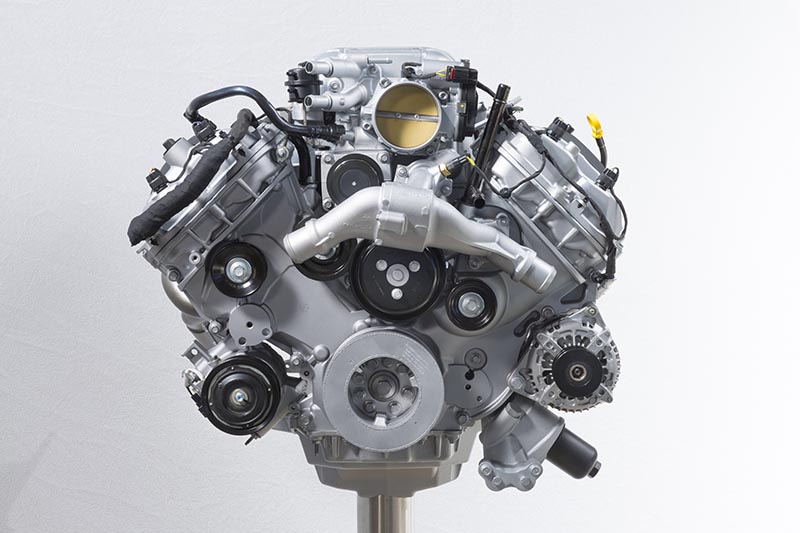
AOAP receives proposals to streamline ILSAC category development
Development of the next gasoline engine oil category is underway. An official request for the new specification was submitted by the International Lubricant Standardisation and Approval Committee (ILSAC) to the API Lubricants Group and the Automotive Oil Advisory Panel (AOAP) on August 16, 2022, with a preferred first licensing date of no later than the end of the second quarter of 2028. ILSAC GF-7, the new passenger car motor oil (PCMO) specification, will supersede ILSAC GF-6, which was launched on May 1, 2020.
As proposed by ILSAC, GF-7 will include a new Sequence V sludge test, which is being developed by U.S. automaker Ford Motor Company, and a new General Motors (GM) Sequence VI fuel economy test with better precision and higher limits. Improvement to the Sequence IIIH oxidation and deposits test has also been requested with a 10% increase in weighted piston deposits (WPD) from the current 4.2 minimum pass limit to 4.6. The Sequence VIII test will be resolved and potentially replaced with a corrosion bench test.
The Sequence IX low-speed pre-ignition (LSPI) test, and the Sequence X chain wear tests are under review and may require replacement engine platforms due to lack of engine replacement parts. A stand-alone aged oil LSPI test is being considered to establish consistent pre-ignition protection throughout the oil drain interval. GF-7 may also include the addition of a new high-temperature wear test and the introduction of ethanol fuel blends.
Noack volatility testing determines the evaporative loss of lubricants in high-temperature service. A bench test procedure is being evaluated at 150°C for an improved engine-to-bench correlation. ILSAC GF-7 will include the ASTM D129 Sulphated Ash Bench Test with a 0.9% maximum sulphated ash requirement. A new seal test procedure (CSR) and bench test for oil gelation—modified by bubbling carbon dioxide—are also planned. Low viscosity grades 0W-8 and 0W-12 will also be included in GF-7.
GF-7 is one of several upgrades to industry specifications currently being considered by AOAP. Ford is progressing with API SP PLUS with the addition of aged oil LSPI protection. The precision matrix is defined, and a statistical review will be completed before voting by the API Lubricants Group and a mandatory waiting period.
API has also submitted a request to the AOAP to add low viscosity grades 0W-8 and 0W-12 to the current ILSAC GF-6B standard. The request fills an identified gap for licensing low-viscosity oils in the global marketplace.
Over the past few months, the AOAP and ILSAC have received modified proposals from individual additive companies on streamlining and accelerating the PCMO category timing.
During a meeting of the AOAP on October 26, 2022, Brent Calcut, OEM liaison manager for engine oils at Afton Chemical, presented a proposal for a streamlined GF-7 process. The U.S.-based global additive maker believes an alternative proposal would deliver key benefits earlier and enable OEMs to take advantage of engine oil improved performance, such as fuel economy, before 2028. Afton Chemical is headquartered in Richmond, Virginia. The proposal includes a category life of five years, which it says is consistent with historical norms and would align with aggressive U.S. corporate average fuel economy (CAFE) requirements that involve 8-10% annual fuel economy index (FEI) in Model Year (MY) 2025 and MY 2026 as well as a 100% adoption of 1mg particulate matter (PM) limit in MY 2025.
The plan would deliver GF-7 performance improvements beyond GF-6 in 2026. Afton Chemical says it is willing to develop a candidate dataset supporting the revised GF-7 proposal.
Under Afton Chemical’s proposal, GF-7 would include the Sequence IIIH engine test at 4.6 WPD and 75% PVIS; the Sequence IVB and the Sequence VIE at the original GF-6 limits; the Sequence VH engine test with enhanced limits and the replacement of the Sequence VIII engine test with a bench test. Sequence IX (after aging) would maintain the current limits and Sequence X would include the original GF-6 limits. Afton Chemical’s proposal includes sulphated ash at 0.9% while Noack remains at 250°C at OEM requested limits and MRV is 40,000 cP for GF-7 only, not for its companion API SQ category. Tighter shear stability and a modified oil gelation procedure are also included. 0W-8 and 0W-12 are incorporated using the JASO M366 test procedure for 0W-8 to 0W-16 oil performance.
The proposal asks for a commitment to the timely development of new performance tests for ILSAC GF-8 by 2028. GF-8 would incorporate the Sequence IIIH at higher limits and introduce a new high-temperature wear test. The new Ford Sequence V test and the GM Sequence VI test, as well as replacement engines for the Sequence IX and X, would be introduced in the 2028 timeframe. GF-8 would create ethanol fuel blends, an updated Noack procedure with tighter limits, a new elastomer method (CSR) and sulphated ash below 0.9%.

Chevron Oronite has offered a second proposal for new categories to improve oil performance—in the short and medium term.
Their proposal stressed that work on Aged Oil LSPI has been underway for 18 months and there is an understanding of what products are acceptable and those that require upgrading. Some OEM specifications have required the 40,000 cP MRV limit for two decades.
Chevron Oronite proposed the addition of 0W-8 and 0W-12 viscosity grades to API SP in 2023. ILSAC could add these viscosity grades to ILSAC GF-6B, says the U.S.-based global additive maker. Chevron Oronite is headquartered in San Ramon, California. The company believes the most efficient way to meet OEM needs is to align with the JASO GLV-1 Next Generation Low Viscosity Automotive Gasoline Engine Oils Specification
First licensing for ILSAC GF-7 would occur in 2026 under the Chevron Oronite proposal—which aligns with the U.S. Environmental Protection Agency’s (EPA) implementation of higher fuel economy requirements in 2026. Chevron Oronite’s proposal includes the new Ford Sequence V test, the GM Sequence VI test and the Sequence IX and X with replacement engines.
Chevron Oronite is also proposing the introduction of ethanol fuel blends, an additional elastomer procedure (CSR), a possible new high-temperature wear test and a new Noack procedure and/or tighter limits, within the 2026 timeframe. Chevron Oronite also highlighted an opportunity to address growing sustainability and electrification needs with the inclusion of new specifications for renewables, alternate fuels, and hybrid vehicles.







